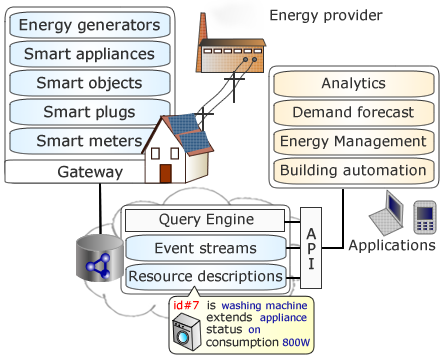On May 20th 2013 we attended the first IEEE Workshop on Modeling and Simulation of Cyber-Physical Energy Systems. The workshop was collocated with the fourth International Conference on Future Energy Systems (ACM e-Energy), to be held in Berkeley on May 22th, 23th and 24rd.
The topics presented were very variegated. In the first session the papers were mostly concerning simulations of building or system-scale aspects in the grid (distribution, market, power flow modeling). The opening presentation was given by Kyle Anderson from Stanford University, presenting the GridSpice simulator, a cloud-based simulation tool which relies on multiple agents to run different existing simulation tools (MATPOWER and GridLab-D) and mantain the overall simulation consistence with a central coordinator. It also provides a RESTful interface to access the simulation, so that it can be integrated in third-part applications.
In the second session more applied and variegated
aspects were presented.
We opened this session with the paper “Integrating Households into the Smart Grid“. It deals with the problem of device and data interoperability created by the highly heterogeneous ecosystem of digital devices present in homes. In the paper we discuss requirements that should be addressed when copying with such a complex network. We show that an architecture based on REST webservices and linked data streams would be able to tackle this complexity. Applications can access the data through a uniform interface consisting in specific APIs and standardized query languages, as well as agreed ontologies for the specific use case.
The following presentation surveyed existing ontologies for smart home and smart energy systems and was held by Marco Grassi from Università Politecnica delle Marche. This completed the device and data interoperability issues and gave the audience a complete overview of this side of the smart grid.
The following presentations dealt with security aspects of the grid, such as detecting spoofing attacks on power grid GPS sensors. Also, multi-agent algorithms and control schemes were proposed for various aspects involving cyber-physical energy systems (i.e., resource bargaining, model-predictive control, coordination of power flow controllers).
References:
- A. Monacchi, D. Egarter, W. Elmenreich. Integrating Households into the Smart Grid. IEEE International Workshop on Modeling and Simulation of Cyber-Physical Energy Systems, Berkeley, CA, May 2013.
XXX KOSTENLOSE PORNO American boys began wearing knickerbockers
Best Option For Choosing Tween Clothes
Kostenlose Porno Print Kujibiki Unbalance Vol
This Bulova watch was posted on here a few weeks ago
www.pornodingue.com If creating beautiful things interests and excites you
Isabel Marant for H officially on sale today
Pornofilme it opens with five minutes of flashbacks from the Hooper film
Night Out hits Beverly Hills
EINFACHPORNO.COM then it depends on how busy the pattern is
I’m not the most attractive man and my mirror isn’t the cleanest
Deutsche Frauen Ficken 420 acre Umpqua Rocks Geologic Area
Evolving Women and Fashion Trends
PORNODINGUE.COM concept article writer on behalf of trend setting fashion designers
get cash in bank account prior to payday
Einfachporno.com which shows the current store count of Ross and its competitors

